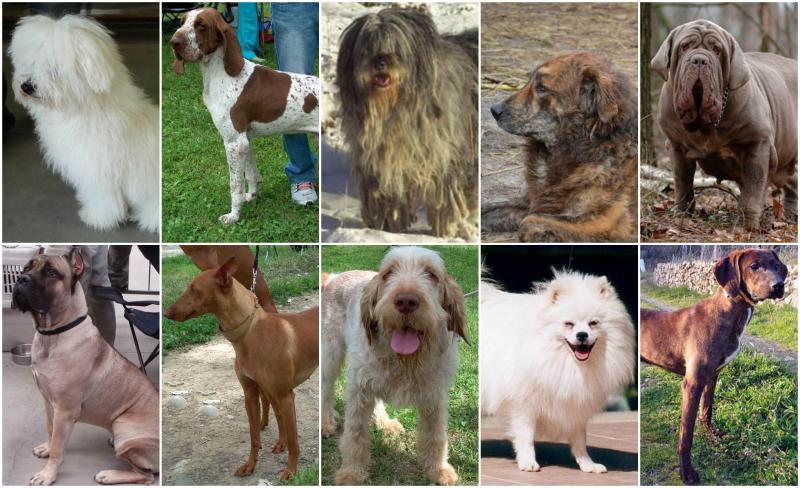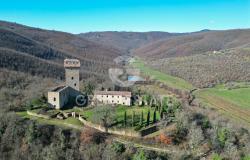Carol King selects 10 dog breeds that originated in Italy that may make for man’s best Italian friend.
Bergamasco Shepherd
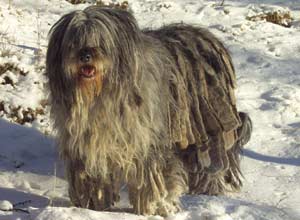
The Pastore Bergamasco (Bergamasco Shepherd) has its origins in the Italian Alps near Bergamo. A pastoral dog, originally used for herding, it is still used for herding cattle and sheep in the Italian and Swiss Alps.
A medium-size dog, the Bergamasco grows to 24 inches in height and can live for up to 15 years. The Bergamasco’s most distinctive feature is its coat, which has three types of hair: a fine dense and oily undercoat, long harsher hairs and a top woolly outer-coat. The unusual coat evolved from living in a cold mountainous area. The coat acts as a protection against the cold, snow and rain, as well as snake and insect bites. The Bergamasco has a thick curtain of coat that covers its eyes like a visor, shielding its eyes from the sun reflecting off snow in the mountains. The Bergamasco is born with short, smooth fur that develops into hair that weaves together to form a mat so it appears to have dreadlocks. Bergamascos can be grey, brown or black in colour.
The breed faced extinction in the 1950s because after World War II the need for wool, and hence sheep, declined, meaning fewer Bergamasco dogs were required as working dogs. An Italian breeder, Maria Andreoli, made efforts to save the breed, although it is still rare. There are an estimated 600 Bergamasco dogs alive today but their numbers are declining.
Bolognese
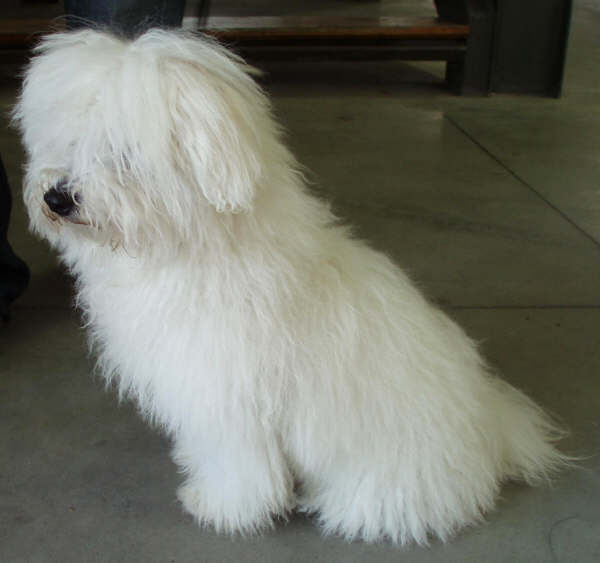
The Bolognese is named after the city of Bologna where the breed is thought to have originated. The breed dates to Ancient Roman times and is depicted on Roman earthenware. Images of the breed also appear on 17th-century Flemish tapestries, and in paintings by Francisco Goya, Antoine Watteau and Nicolas Gosse. The Italian artist Titian famously painted a portrait of Federico II Gonzaga, Duke of Mantua with his pet Bolognese c. 1529, which now hangs in Madrid’s Museo del Prado. Other well-known owners of Bolognese dogs are Catherine the Great of Russia, Madame de Pompadour and Empress Maria Theresa of Austria.
The Bolognese is a small dog that grows up to 12 inches high and weighs up to 14 pounds. It has long, fluffy white hair that falls in loose, open flocks like ringlets over the body. The average life span of the Bolognese is 14 years.
Cirneco of Etna
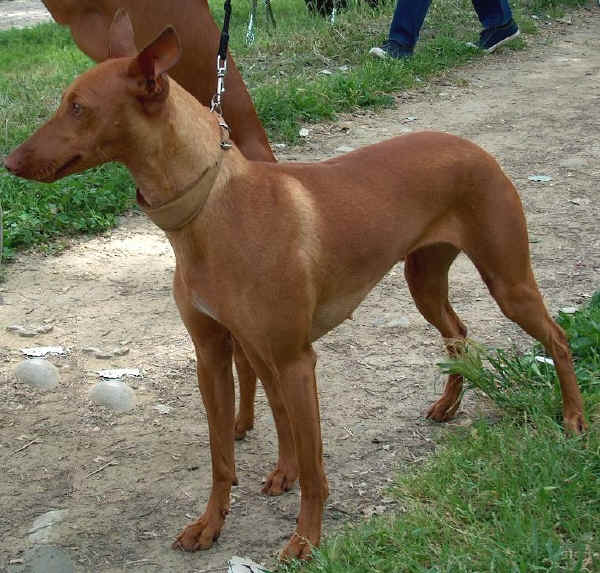
The Cirneco dell’Etna (Cirneco of Etna) is a small, slender breed of hunting dog that looks similar to a greyhound. The breed is originally from Sicily, where it was bred to endure the harsh terrain of Mount Etna and used to hunt wild rabbits. It is one of the smallest breeds of hunting dogs measuring up to 20 inches high and weighing up to 26 pounds. It has a shorthaired coat that is light to dark tan in colour, sometimes with white markings, and it is well known for its independent temperament.
Courser
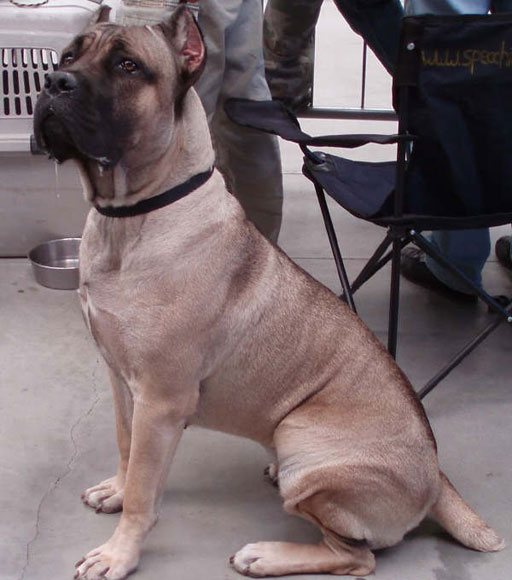
The Cane Corso (Courser) derives its name from the Latin ‘cohors’, meaning ‘protector’. The Ancient Romans used the breed to guard livestock, hunting game and as fighters in war.
A muscular dog, it stands 28 inches high and weighs up to150 pounds and has a black or fawn shorthaired coat, sometimes with white markings. The average life expectancy is 11 years.
Italian Pointer
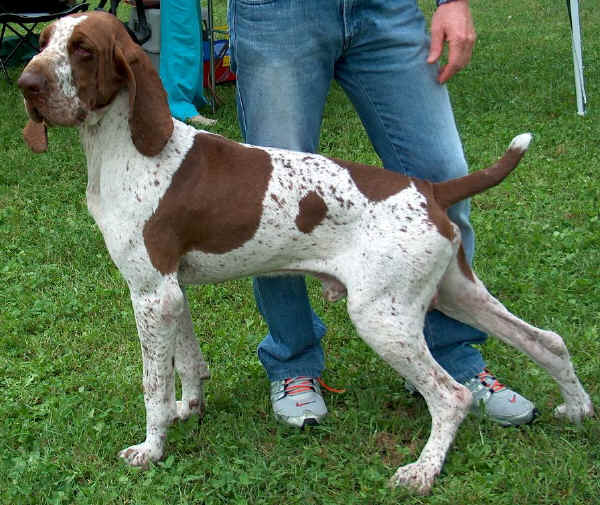
The Bracco Italiano (Italian Pointer) has ancient roots in Italy and is mentioned in writings of the 4th and 5th centuries. It was bred as a hunting dog, first to drive birds into nets and then as a gundog. Images of the Bracco appear in 14th-century frescoes and engravings, and the dog was bred by the illustrious Medici and Gonzaga families during the Renaissance when hunting birds was a sport favoured by the Italian aristocracy. The dogs were so highly prized that records show that a chestnut Bracco was given as a gift to the French Royal Court in 1527.
The Bracco is thought to have developed from a cross between the white and orange Piedmontese Pointer, and the white and chestnut Lombard pointer. The Bracco faced extinction in the late 19th century, but was saved thanks to the efforts of Italian breeder Ferdinand Delour de Ferrabouc.
Braccos look like Bloodhounds with solemn faces and long, droopy ears. They are mottled in appearance with coloured patches, often white and orange, or white and brown, but also with chestnut and amber markings.
Italian Spinone
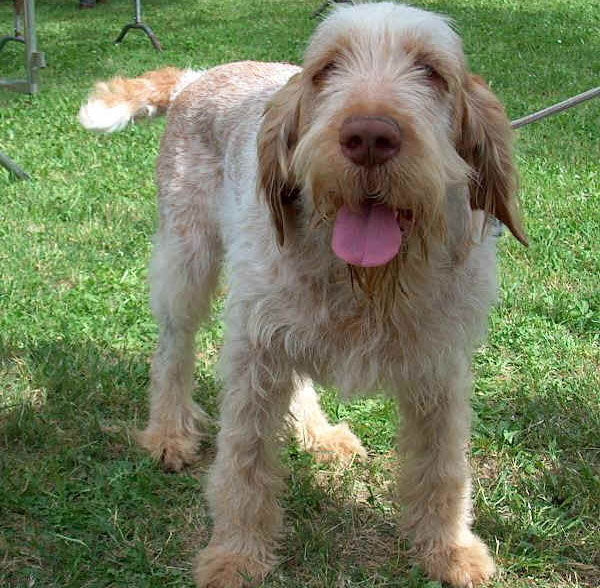
The Spinone Italiano (Italian Spinone) is one of the oldest breeds of gun dogs. The provenance of the breed is uncertain but some think it was brought to Italy by traders from Greece and the western Adriatic coast during Ancient Roman times. The Spinone is believed to be named after an Italian thorn bush, the spino, which was a hiding place for small game seeking shelter from larger predators. The wiry-haired Spinone was able to penetrate the prickly bush and is known for being able to hunt in dense cover, and both retrieve from and track on water. After World War II, the breed faced extinction but was saved thanks to the efforts of Italian enthusiasts.
Spinone are large dogs that can weigh up to 86 pounds and reach up to 28 inches in height. They are strong with a wiry coat, rough beard and large nose. Their coats are usually white, white with orange or chestnut markings, brown roan with brown patches, or orange roan with orange patches. The average life expectancy of a Spinone is nine years.
Sicilian Shepherd
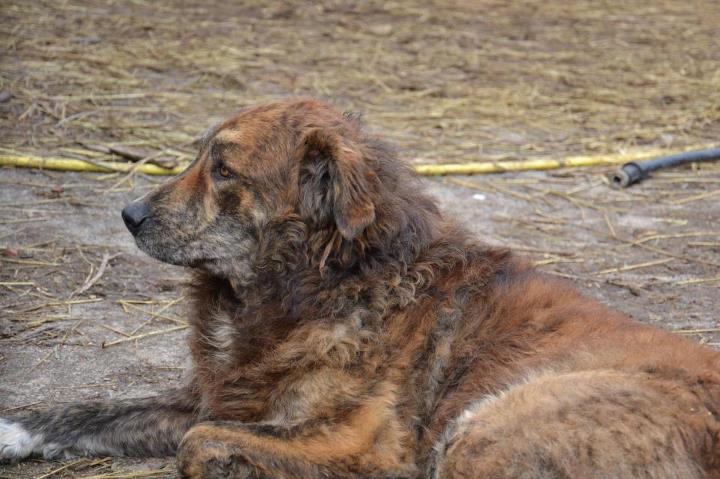
The Cane di Mannara (Mannara Dog or Sicilian Shepherd), is a pastoral dog used by shepherds in Sicily and homeowners as a guard dog. Unlike the other breeds mentioned in this article, the Sicilian Shepherd faces extinction and there were only 90 Sicilian Shepherds known to exist in 2012. However, in 2010, the Associazione Samannara (Samannara Association) was set up in an effort to save the breed. Part of that effort includes formal recognition of the breed and its characteristics, so that a studbook can be set up to preserve the breed. The association has made some progress and in January 2013, a provisional standard was established. The Veterinary Sciences department at the University of Messina is collaborating in the project.
The Sicilian Shepherd is thought to have arrived on Sicily in the Bronze Age, according to bones discovered by archaeologists, and is likely to have been introduced to the island by the Phoenicians. Its name is thought to derive from the Latin ‘manere’ used to describe an animal that stayed at the enclosure, and the Sicilian Shepherd would have remained at the ‘mannara’ – a wall of thorny bushes used to enclose a flock of sheep – guarding sheep while a shepherd was away. Bitches even gave birth in the enclosure to ensure that puppies grew up attached to the sheep rather than the shepherds. There are historical records referring to the breed dating to the 1800s and it is hoped that lovers of the Sicilian Shepherd will ensure its survival for future generations. The Samannara Association is seeking volunteers to participate in the project.
Maremma Scenthound
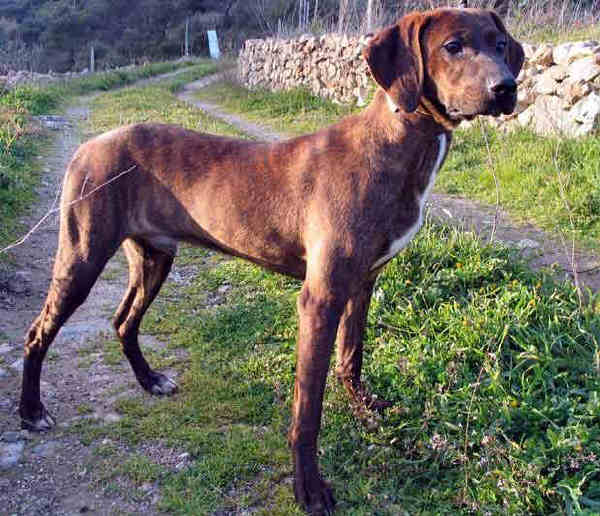
The Segugio Maremmano (Maremma Scenthound) comes from the coastal plains of Maremma in Tuscany, where it is used to hunt wild boar.
The Segugio Maremmano stands up to 21 inches at the withers and weighs up to 51 pounds. It can have a smooth or rough coat in brown, black and tan, or striped with white markings.
Neapolitan Mastiff
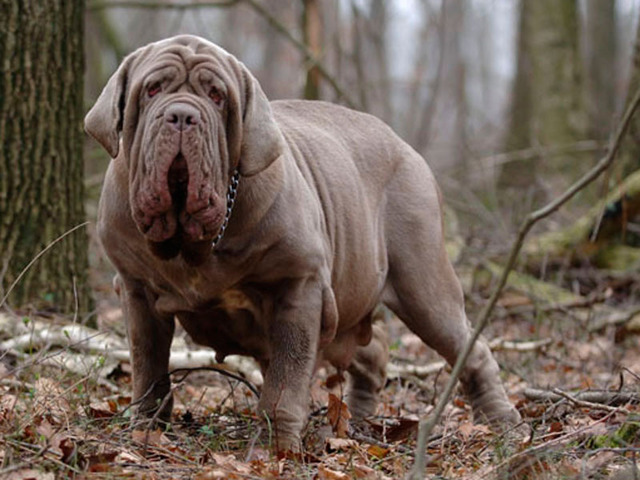
The Mastino Napoletano (Neapolitan Mastiff), or Italian Mastiff, is thought to be descended from dogs used by the Ancient Romans during their campaigns across Europe. A large, muscular dog with a large head, powerful jaw, short strong legs weighing as much as 200 pounds and measuring 30 inches high, the Romans used Neapolitan Mastiffs as guard dogs. The Romans also trained Neapolitan Mastiffs as gladiator dogs to fight in wars, and in amphitheatres to bait bears, bulls and even jaguars.
The breed faced extinction after World War II but was saved when Italian painter Piero Scanziani set up a breeding kennel in Rome in 1949. Lovers of the Neapolitan Mastiff often refer to the breed simply as ‘Neo’.
The life expectancy of a Neapolitan Mastiff is seven to nine years. They are short haired, and black, brown or grey in colour.
Volpino Italiano
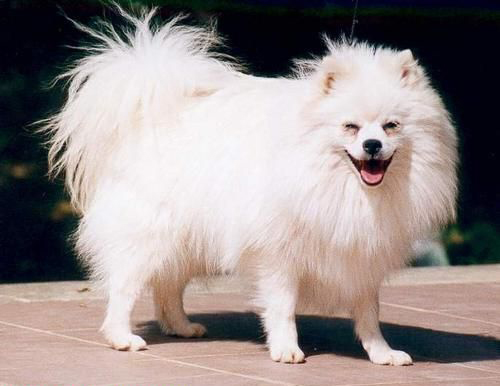
Volpino Italiano means ‘little Italian fox’. It is a spitz breed with long, thick fur, a curly tail and small, pointed ears. The breed dates back thousands of years, and was loved by aristocrats and peasants alike – it is even thought that Italian artist Michelangelo had a Volpino. In 1965, only five Volpino were known to exist but a project was founded to save the Volpino breed using animals used as guard dogs on farms. There are thought to be a few thousand Volpino alive today.
The Volpino is usually white, black, champagne or red in colour. It weighs up to 12 pounds and has an average height of 11 inches. Although the Volpino is small, it is often used as a guard dog. A Volpino has an average life expectancy of 15 years.
